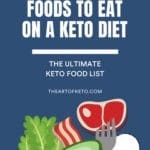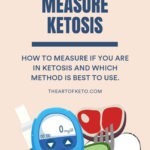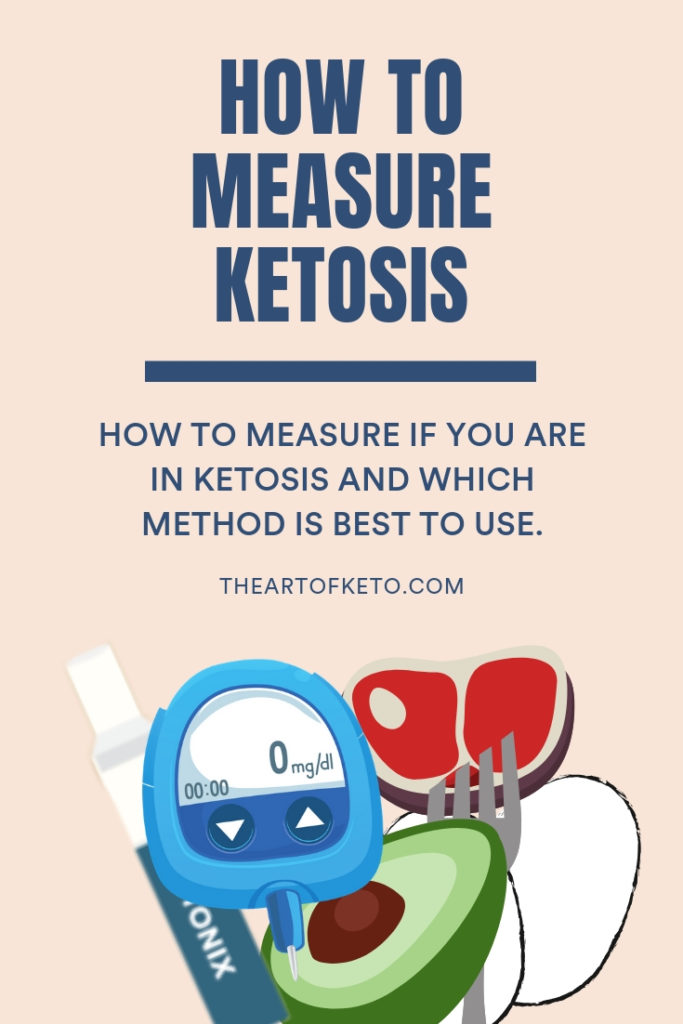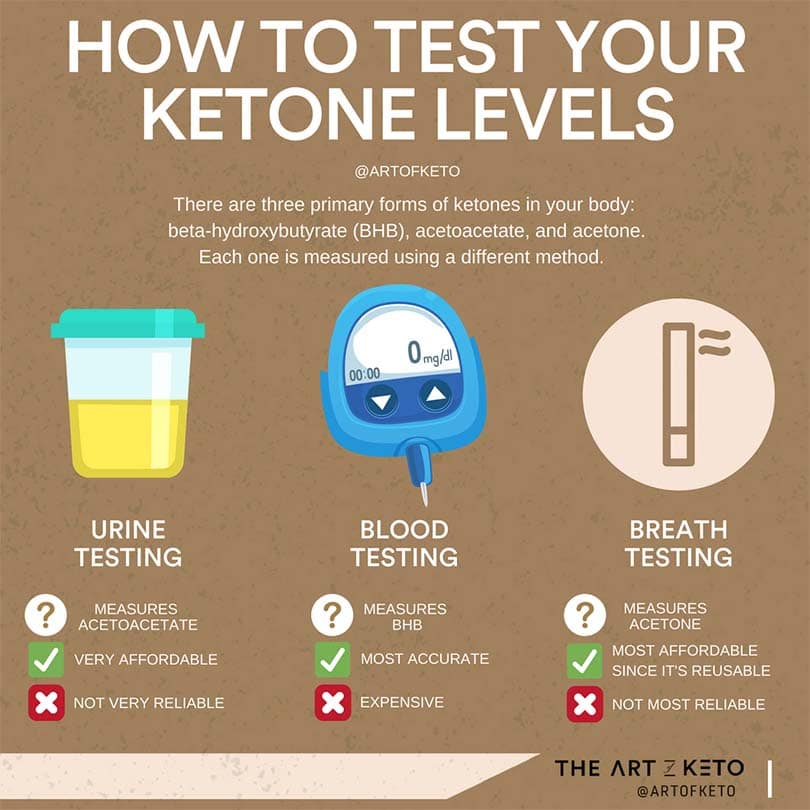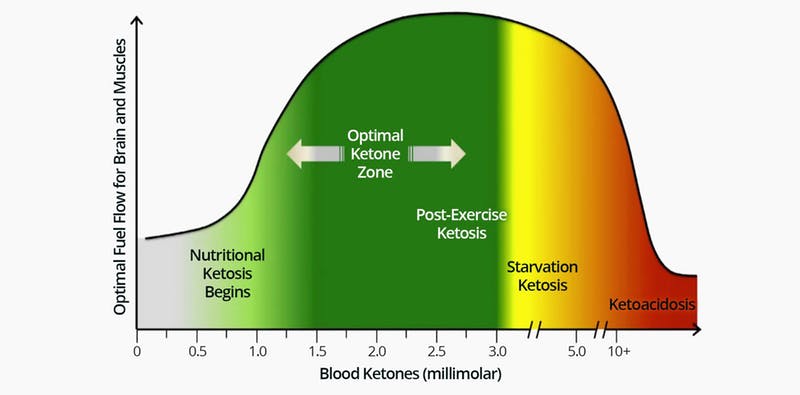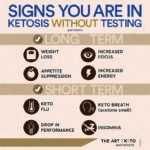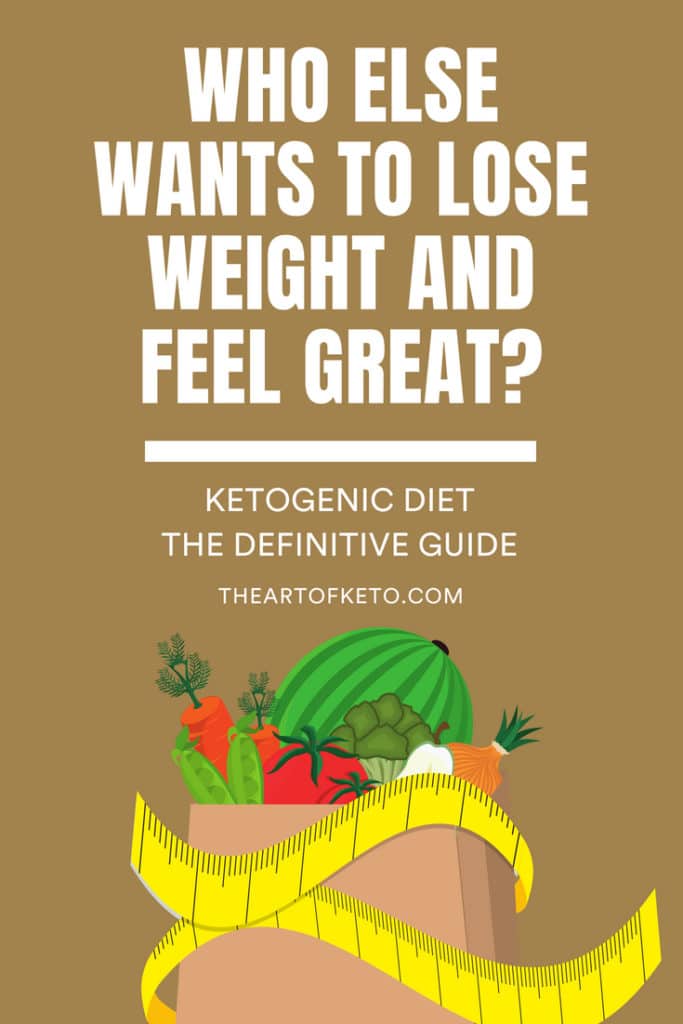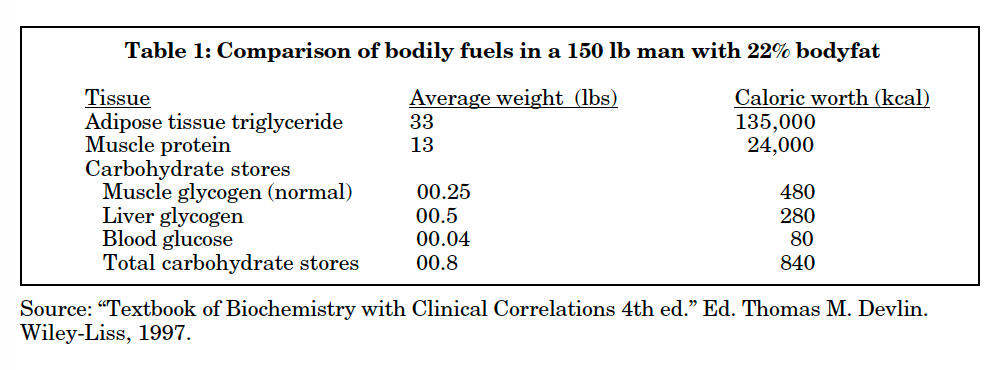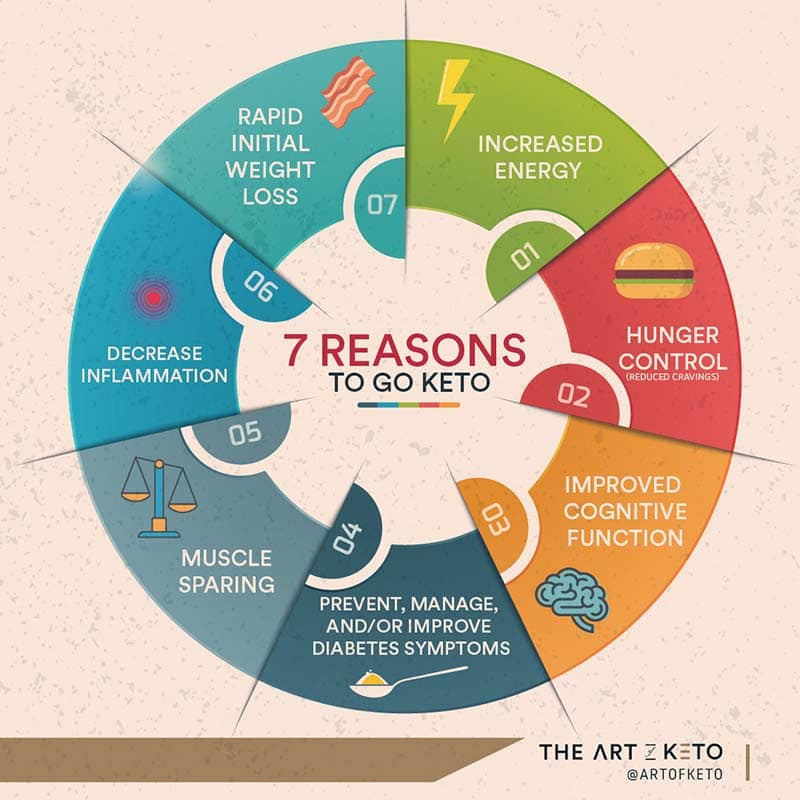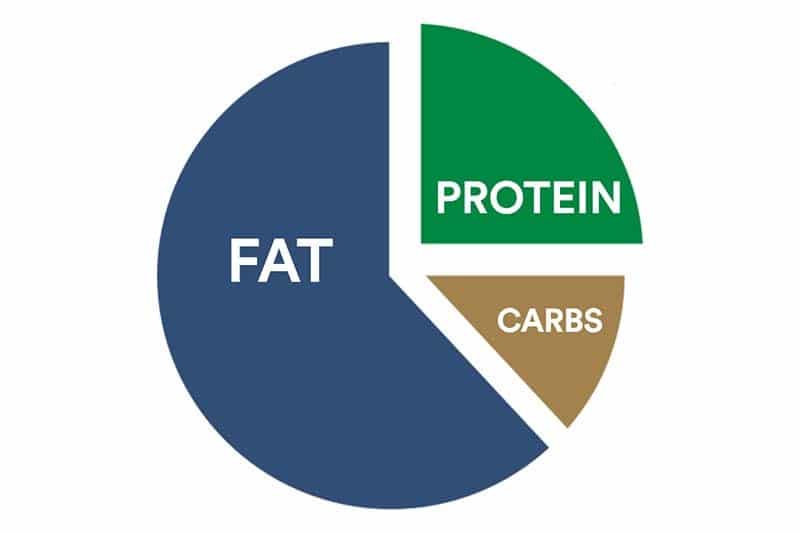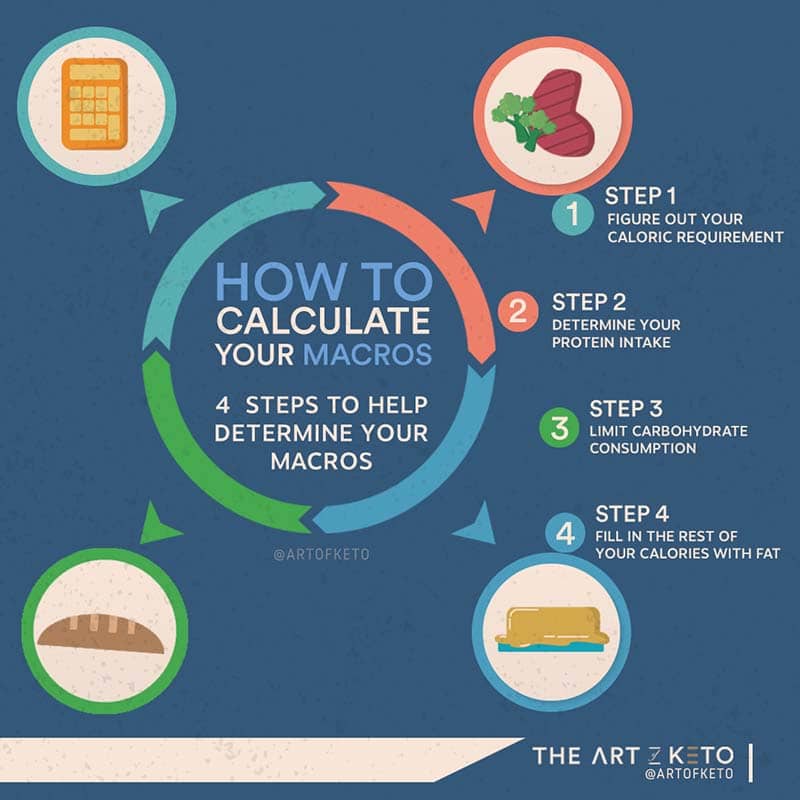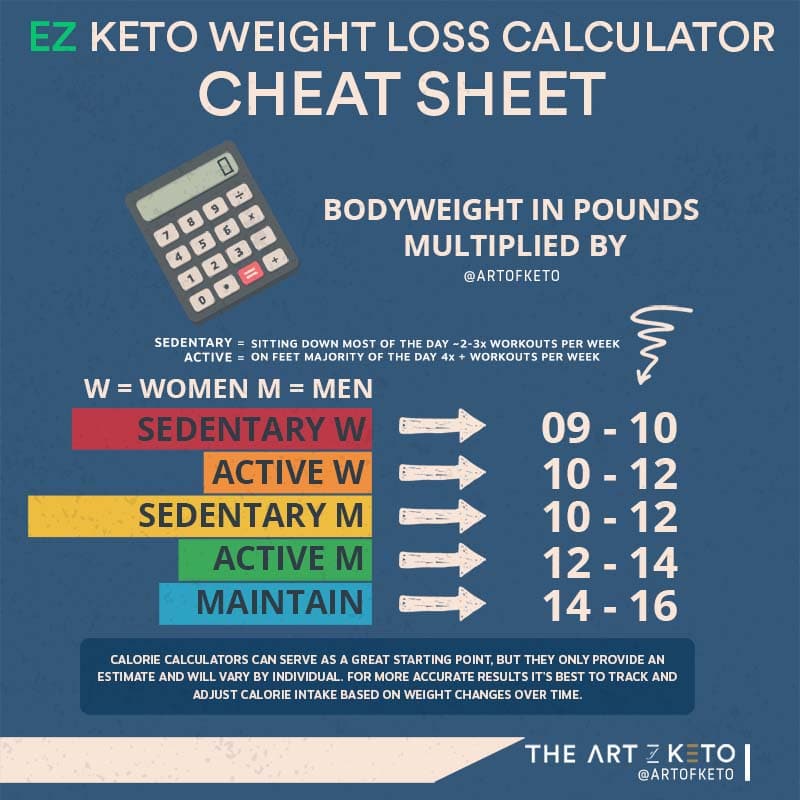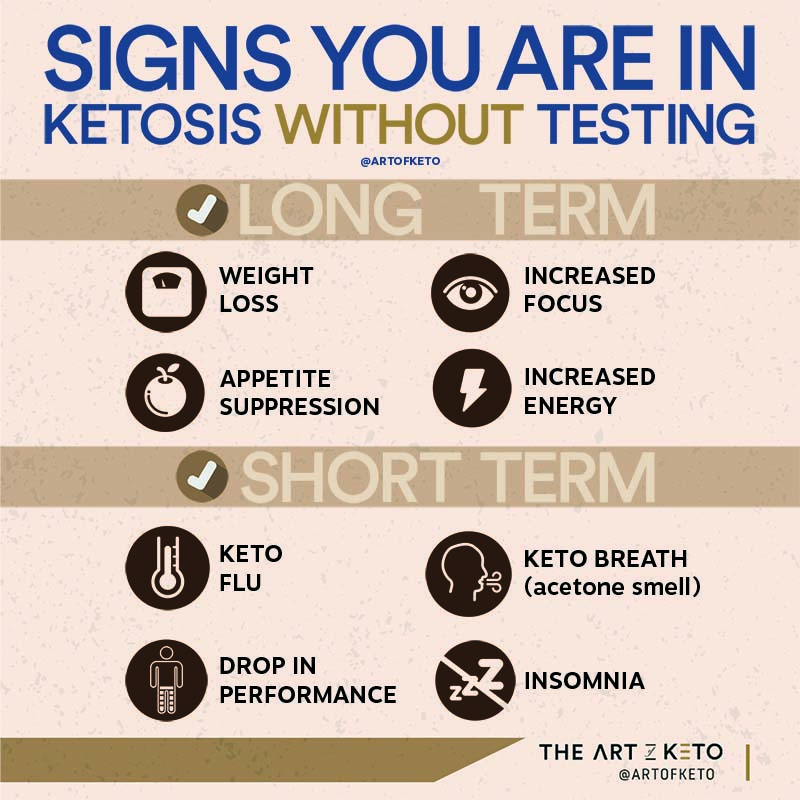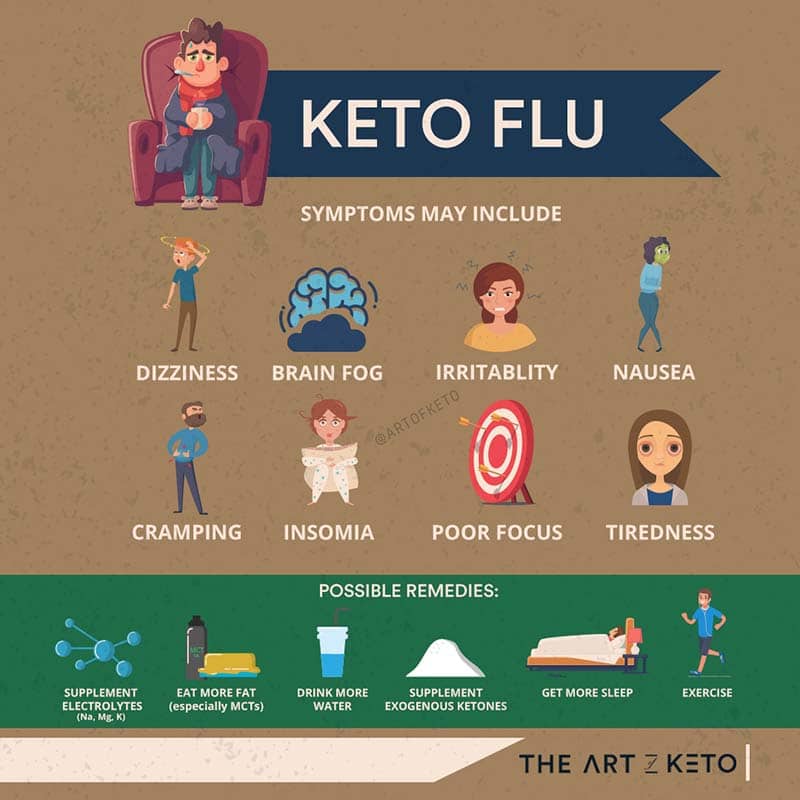One of the most common questions we frequently receive is what can you eat on a keto diet? We've compiled this ultimate keto diet food list for you to reference.
Starting any new diet or significant lifestyle change doesn't come easy, especially when you don't have a clear understanding of what to eat and what to avoid.
To make this transition easier, we've put together this ketogenic list of foods to help you make the best and most informed choices.
Keto food list pdf
Don't have time to read all 5,000+ words? Download a PDF to read offline at a later time.
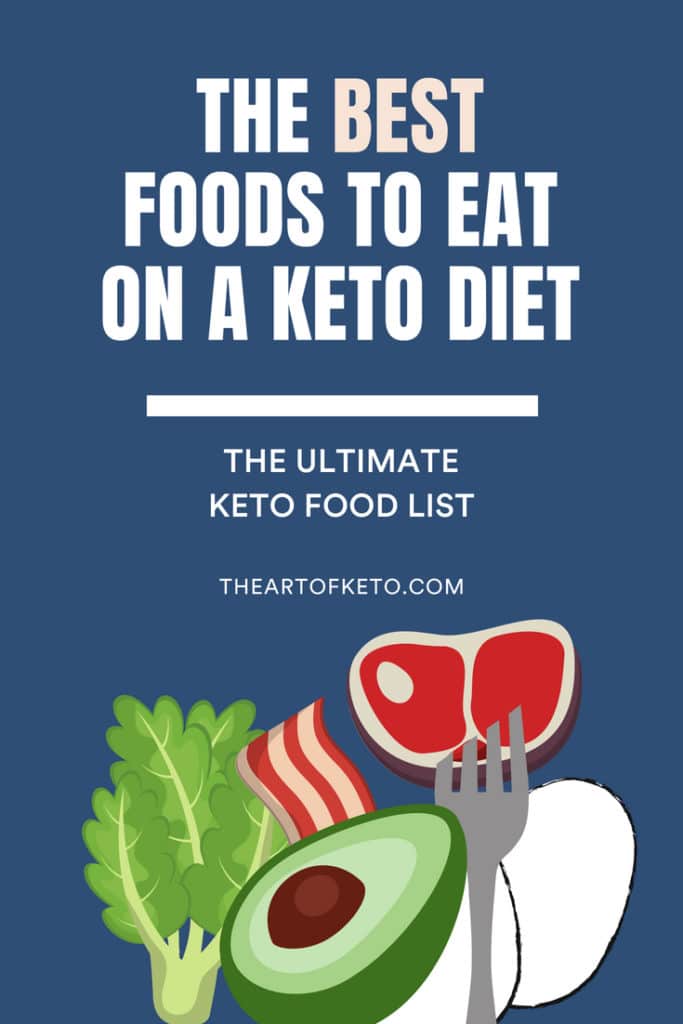
Chapter 1: Keto foods list intro
What are ketogenic foods?
Simply put, keto friendly foods is any food that allows us to stay below our carbohydrate threshold. Staying within or below or carbohydrate allotment will enable us to achieve or maintain a state of ketosis. 1
So: How many carbs can you eat and still be in ketosis?
On average, most foods that allow you to stay within the ~ 5% carbohydrate allowance is fair game.
Technically any and every food can be eaten on a ketogenic diet, the only requirement is that you stay within the carb limit that allows you to maintain a state of ketosis.
In summary, you can eat from the below keto diet foods list broken down into the following food groups:
- Protein. We're here to tell you not to fear protein. The majority of meat, unless processed is typically free of any added sugar and has low to no carbohydrates. We recommend organic, grass-fed, and pasture-raised if feasible and available.
- Carbohydrates (Fruits and Vegetables). Try to stick to green-leafy vegetables when possible. If consuming fruits, small amounts of berries are usually permissible.
- Fats + Oils. We prefer getting most of your fats from natural sources such as fatty cuts of meats, egg yolks, and avocados. If looking to add additional calories and fats feel free to supplement with saturated and monounsaturated fats like avocado oil, coconut oil, and grass-fed butter.
- Dairy. As long as you do not have an allergy to dairy, most dairy should be ok. Try to stick to full-fat dairy items and hard cheeses as they typically have the least amount of carbs.
- Nuts and Seeds. Nuts, seeds, and nut butter (in moderation) are great for a ketogenic diet. Higher fat nuts such as macadamia and pili nuts also have the fewest carbs. Be careful with nuts and seeds and these can easily be over consumed.
- Beverages. While it would be best to stick with water, beverages such as tea and coffee (unsweetened or with an approved sweetener) are also ok.
- Spices, condiments, and sauces. Almost any spice (as long as there is no added sugar) is ok. Be wary of condiments and sauces as most of them have added sugars.
- Sweeteners. We prefer to stick with stevia, erythritol, and allulose over any other sweetener.
Below you will be able to find an in-depth breakdown of the above food groups. You will be able to determine which ketogenic diet foods to include, and you'll never have to ask the question “How do I avoid carbs?” again.
This will be your keto foods roadmap.
Chapter 2: Keto diet foods list: PROTEINS
Contrary to what you may see or have already read, you need not fear protein.
It is true that a ketogenic diet is moderate in protein, but there is a lot of demonizing of protein in the ketogenic community and claims that too much protein will knock you out of ketosis.
Proteins are the building block of muscle and the most satiating macronutrient compared to fat or carbohydrates.
Unless you are on a ketogenic diet for therapeutic reasons, there is no need to limit your protein intake on purpose. We're here to tell you to eat up! … within reason of course.We do recommend you get most of your fats from natural sources before supplementing them with nuts and oils. You can quickly hit most or all your fat intake directly through the fats tagging along from your protein sources.
To get your fat up through protein, stick to dark meat over white meat when consuming poultry and even buy them with the skin ON.
Fish also serves as an excellent source of protein and healthy fats. Oily fish such as salmon, mackerel, and sardines are rich in omega 3's.
When it comes to red meat, try to stick to fattier cuts such as ribeyes and NY strips to get in your fats (and they taste better). If beef mince/ground beef is more your thing, try and stick to 80/20 or fatter mixes if you can get your hands on it.
US Wellness Meats makes an excellent ground beef/beef heart mix that we love.
Your best bet when it comes to your proteins, if available and the budget allows, is to stick with wild caught fish, grass-fed beef, and other pasture-raised meats.
Grass-fed and pasture-raised meats are higher in Omega-3 fats, lower in Omega-6 polyunsaturated fat, and more micronutrient dense than their grain-fed counterparts.
Organ meats are also highly recommended as they are the most micronutrient dense.
Organ meats do contain some trace carbohydrates compared to muscle meat but don't let that deter you as the nutrition massively outweighs a few carbs they contain.
If you don't have a local source for grass-fed or pasture-raised meat we recommend U.S. Wellness Meats and Butcher Box which delivers high-quality meat straight to your door.
Butcher box is a subscription-based service and U.S. Wellness Meats is on a per order basis where you choose meats individually.
Note: Do be wary of cured meats and sausages as some have added sugars and other processed ingredients.
A few examples of protein sources include:
- Beef. All percentages of ground beef, steaks, roasts, and organs. Try to stick to fattier cuts such as ribeyes and strip steak when possible.
- Poultry. Chicken, turkey, geese, duck, quail, and other wild game for all you exotic meat loving folk.
- Other Meats. Bison, veal, lamb, and other wild game.
- Fish. Just like meat, all fish is fair game with the fattier fish such as mackerel and salmon preferred. When possible, stick to wild caught fish.
- Shellfish. Oysters, lobster, crab, scallops, mussels.
- Eggs. Consume whole eggs and cook them any which way you like. Stick to pasture-raised and organic when possible.
Below is a macronutrient breakdown of some commonly consumed proteins on a ketogenic diet.
| Protein | Calories | Fats (g) | Net Carbs (g) | Protein (g) |
|---|---|---|---|---|
| Beef: Ribeye (4 oz.) | 329 | 26 | 0 | 24 |
| Beef: New York Strip (4 oz.) | 250 | 17 | 0 | 23 |
| Beef: Ground Beef 80/20 (4 oz.) | 204 | 13 | 0 | 20 |
| Beef: U.S. Wellness Keto Ground 55/45 (4 oz.) | 480 | 47 | 0 | 15 |
| Beef: Brisket (4 oz.) | 285 | 22 | 0 | 21 |
| Poultry: Chicken Thigh Boneless Skin On (4 oz.) | 278 | 17 | 0 | 28 |
| Poultry: Chicken Breast Boneless Skinless (4 oz.) | 119 | 2 | 0 | 25 |
| Poultry: Chicken Drumstick (4 oz.) | 180 | 10 | 0 | 22 |
| Poultry: Turkey Thigh Boneless Skinless (4 oz.) | 178 | 10 | 0 | 22 |
| Poultry: Turkey Breast Boneless Skinless (4 oz.) | 128 | 0 | 0 | 25 |
| Fish: Sockeye Salmon (4 oz.) | 161 | 6 | 0 | 24 |
| Fish: Sardine (4 oz.) | 128 | 17 | 0 | 25 |
| Fish: Mackeral (4 oz.) | 232 | 16 | 0 | 22 |
| Fish: Tilapia (4 oz.) | 100 | 3 | 0 | 20 |
| Fish: Tuna (4 oz.) | 124 | 1 | 0 | 28 |
| Pork: Tenderloin (4 oz.) | 120 | 3 | 0 | 23 |
| Pork: Belly (4 oz.) | 587 | 60 | 0 | 11 |
| Pork: Sirloin (4 oz.) | 136 | 3 | 0 | 26 |
| Pork: Shoulder (4 oz.) | 304 | 21 | 0 | 27 |
| Pork: Loin Boneless (4 oz.) | 140 | 4 | 0 | 27 |
| Egg (1 large) | 70 | 5 | .5 | 6 |
Carbohydrates : AKA Fruits and Veggies
Carbohydrates… we're not here to demonize carbs, but the number one underlying factor in obtaining AND maintaining a state of nutritional ketosis is the reduction of carbohydrates.
You can see why it would be essential to know which and how much to eat when it comes to carbs.
Almost all, if not all, carbohydrates should be coming from keto vegetables and lower carb fruits such as berries.First off, not all vegetables and fruits are created equal. Some vegetables and most fruits are not conducive to a ketogenic diet.
Not to say that you cannot eat them, but it may not be worth eating such a small amount of certain vegetables and fruits.
But that will be for you to decide.
Vegetables are great for a ketogenic diet because they are high in nutrients and relatively low in carbohydrates.
When choosing, try to stick to cruciferous vegetables grown above ground such as nopales, spinach and kale. Green and leafy is usually a safe bet, and they typically contain the least amount of carbs and are the most nutrient dense of the bunch.
Underground vegetables or root crops such as carrots, yams, and potatoes should be avoided as they are very high in carbohydrates.
Regarding fruits, almost all of them are high in sugar. Yes, the sugars are natural sugars, but they still are counterproductive to achieving and maintaining a state of ketosis.
The exception here are berries which you may choose to have in moderation.
Much like our protein sources, we do value quality. Try to opt for organic produce when possible, but if it's not feasible then don't worry about it.
Studies have shown that both organic and non-organic vegetables and fruits still contain similar, if not the same, nutrition profiles.
In the end, there are no hard or fast rules when it comes to vegetable consumption besides the ones we've stated. Vegetables are very filling and hard to overeat (hard, not impossible) so just be mindful of your intake.
Some commonly consumed keto vegetables and fruits with their calorie and macronutrient breakdown shown below.
| Keto Carb Source | Calories | Fats (g) | Net Carbs (g) | Protein (g) |
|---|---|---|---|---|
| Broccoli (4 oz.) | 39 | 0 | 5 | 3 |
| Cauliflower (4 oz.) | 28 | 0 | 3 | 5 |
| Spinach (4 oz.) | 25 | 0 | 2 | 3 |
| Mushrooms, White (4 oz.) | 25 | 0 | 3 | 4 |
| Cabbage (4 oz.) | 28 | 0 | 4 | 1 |
| Green Beans (4 oz.) | 33 | 0 | 3 | 1 |
| Romaine Lettuce (4 oz.) | 19 | 0 | 2 | 1 |
| Yellow Onion (4 oz.) | 45 | 0 | 9 | 1 |
| Green Bell Pepper (4 oz.) | 23 | 0 | 3 | 1 |
| Kale (4 oz.) | 56 | 1 | 6 | 5 |
| Raspberries (4 oz.) | 60 | 1 | 6 | 1 |
| Blueberries (4 oz.) | 65 | 0 | 13 | 1 |
| Strawberries (4 oz.) | 36 | 0 | 7 | 1 |
| Blackberries (4 oz.) | 49 | 1 | 5 | 2 |
| Plum (4 oz.) | 52 | 0 | 9 | 1 |
| Kiwi (4 oz.) | 69 | 1 | 14 | 1 |
| Cherries (4 oz.) | 71 | 0 | 16 | 1 |
| Clementine (1 small) | 35 | 0 | 8 | 0 |
| Cantaloupe (4 oz.) | 40 | 0 | 9 | 1 |
Additional questions
Chapter 4: Fats and Oils
Fats will make up the bulk of your daily caloric intake, but that is more a byproduct than a necessity.
Meaning, we want to determine our calorie intake first based on our goals. Then, once we have our caloric needs met, we must assess our protein requirements and limit our carbohydrate intake.
Finally, as to not have our calories be too low, we fill in the rest of the calories with fat making a ketogenic diet a high-fat diet as a result.
Confused? Download our quick start guide which will help you set up your ketogenic diet down below.
As we said, fats will make up a significant portion of your calories as to not have calories set at such low levels.
If you're sticking to fattier cuts of meat and oily fish for proteins as we've recommended above, only small amounts of supplemental fats and oils should be necessary or perhaps not necessary at all.
Fats themselves are vital to our bodies; they help store energy, insulate us, and protect our vital organs. With that, not all fats are created equal.
You want most fats coming from saturated and monounsaturated fats with limited amounts coming from polyunsaturated and trans fats.
Saturated and monounsaturated fats such as those that come from meats, butter, avocado, and egg yolks are commonly consumed amongst the ketogenic community. Below you can find a brief overview of the different fats.
- Saturated. Eat – Saturated fats can be found naturally in meats and sources such as butter, ghee, and coconut oil.
- Monounsaturated. Eat – Monounsaturated fats are found in avocados, macadamia nuts, olives, and their oil equivalents (olive oil, avocado oil, etc.)
- Polyunsaturated. Avoid – While you can't avoid them, there is no need to add any polyunsaturated fats INto your diet purposely. You will get enough of them through animal protein and fatty fish as it is.
- Trans. Avoid – Highly processed and chemically altered (hydrogenated) fats should be avoided.
Another great way to get fats into your diet is to cook with them. Use fats like tallow, coconut oil, butter, and lard.
They are lower in polyunsaturated fats, but they also have a higher smoke point which reduces its chances of oxidation, something we don't want.
Additionally, you can use fats as toppings or drizzle oil on your vegetables and salads.
Who doesn't like a tab of butter atop a warm medium rare steak?
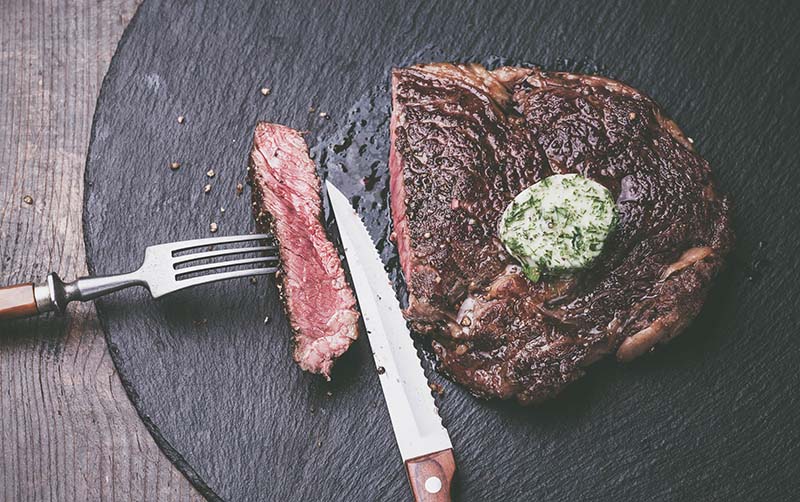
Tip: We like to cook our fatty proteins first and then soak up the remaining fat while lightly sauteing our veggies directly after in the same pan.
Note: Almost any pure fat source will provide you with about ~12g of fat per tablespoon.
Below is a keto diet food list of fats and oils:
| Keto Fat Source | Calories | Fats (g) | Carbs (g) | Proteins (g) |
|---|---|---|---|---|
| Egg Yolks (1 Yolk) | 55 | 5 | 1 | 3 |
| Macademia Nuts (1 oz.) | 204 | 21 | 2 | 2 |
| Pili Nuts (1 oz.) | 198 | 23 | 1 | 3 |
| Tallow (1 tbsp) | 115 | 13 | 0 | 0 |
| Lard (1 tbsp) | 116 | 13 | 0 | 0 |
| Butter (1 tbsp) | 102 | 12 | 0 | 0 |
| Ghee (1 tbsp) | 135 | 15 | 0 | 0 |
| Mayonnaise (1 tbspc) | 90 | 10 | 0 | 0 |
| Olive Oil (1 tbsp) | 119 | 14 | 0 | 0 |
| Avocado Oil (1 tbsp) | 124 | 14 | 0 | 0 |
| Macademia Nut Oil (1 tbsp) | 120 | 14 | 0 | 0 |
| MCT Oil (1 tbsp) | 128 | 14 | 0 | 0 |
| Coconut Oil (1 tbsp) | 120 | 14 | 0 | 0 |
| Cocoa Butter (1 tbsp) | 120 | 14 | 0 | 0 |
| Coconut Butter (1 tbsp) | 100 | 11 | 0 | 0 |
| Avocado (1 med.) | 234 | 21 | 2 | 3 |
Chapter 5: Keto diet foods list – DAIRY
Within moderation, dairy is perfectly acceptable on a ketogenic diet so long as you don't have any specific dairy allergies or intolerances.
Everyone loves their dairy, and we're here to tell you that you don't have to give dairy up on your ketogenic diet. Dairy, depending on the source, serves as a great way to add both additional fats and proteins into your diet.
Just be wise with your choices, and keep the consumption to a moderate level ok?
When possible, try to stick to grass-fed, raw, and organic dairy products. Not only are grass-fed cows healthier, but the dairy they produce is far more nutritious than their corn-fed counterparts.
Grass-fed dairy contains a more considerable amount of beta-carotene, omega-3 fatty acids, and also high in conjugated linoleic acid (CLA), a healthy fat associated with lowering inflammation-related disorders like asthma.
Secondly, make sure to opt for higher or full-fat dairy products over the low-fat or non-fat choices as the latter typically contain more carbs, and we are not looking to shy away from the fat.
Of course, if you wish to have the dairy then try to stick to ricotta and cottage cheeses and aged cheeses like cheddar, Parmesan, Colby, and Swiss.
Yogurts with live active cultures may be tolerable as the live active cultures also help to digest lactose in the yogurt, especially in dairy items like kefir, which is keto friendly as well.
Some of the most commonly consumed dairy items on keto:
- Heavy cream. For tea and coffee… or what we like to use to make our omelets and scrambled eggs light and fluffy.
* Read: HWC and Keto - Cheese. As a keto diet snack or atop their protein and veggies.
- Mayo. Make dips and sauces or use it in an egg salad (our favorite use)* We recommend Primal Kitchen Mayo
- Unsweetened Greek Yogurt such as Two Good Greek Yogurt or Oikos Triple Zero Greek Yogurt.
Here are a nutritional calorie and macronutrient breakdown of commonly consumed dairy items on a ketogenic diet.
| Keto Dairy Source | Calories | Fats (g) | Net Carbs (g) | Protein (g) |
|---|---|---|---|---|
| Heavy Cream (1 oz.) | 100 | 12 | 0 | 0 |
| Cream Cheese (1 oz.) | 94 | 9 | 1 | 4 |
| Sour Cream (1 oz.) | 62 | 6 | 1 | 1 |
| Greek Yogurt (1 oz.) | 28 | 1 | 1 | 3 |
| Icelandic Yogurt (1 oz.) | 23 | 0 | 2 | 3 |
| Half n' Half (1 oz.) | 40 | 4 | 1 | 1 |
| Cottage Cheese (1 oz.) | 25 | 1 | 1 | 4 |
| Mayonnaise (1 oz.) | 180 | 20 | 0 | 0 |
| Almond Yogurt (1 oz.) | 40 | 2 | 3 | 2 |
| Coconut Milk (1 oz.) | 45 | 5 | 0 | 0 |
| Coconut Cream (1 oz.) | 63 | 6 | 1 | 1 |
| Brie (1 oz.) | 95 | 8 | 0 | 6 |
| Triple Cream Brie (1 oz.) | 120 | 11 | 0 | 4 |
| Aged Cheddar (1 oz.) | 110 | 9 | 0 | 7 |
| Parmesan (1 oz.) | 110 | 7 | 1 | 10 |
| Mascarpone (1 oz.) | 120 | 13 | 0 | 2 |
| Mozzarella (1 oz.) | 70 | 5 | 1 | 5 |
| Gouda (1 oz.) | 101 | 8 | 1 | 7 |
| Goat Cheese (1 oz.) | 76 | 6 | 0 | 5 |
Chapter 6: Nuts and Seeds
Contrary to popular belief, nuts are an excellent source of fat on a ketogenic diet, not protein. While they do contain protein, their most prominent contribution is in the fat category.
But not all nuts are created equal… and no a peanut isn't a nut.
We've established that nuts are mighty tasty and high in fats, but maybe you've come across some conflicting information whether they are acceptable on a ketogenic diet.
The quick answer is that you utterly can consume nuts on the keto diet, but there are some caveats, and not all nuts are created equal.
Many nuts and seeds contain phytic acid, an anti-nutrient that binds to minerals in food and prevents us from absorbing them.
So, if you are planning to consume nuts and seeds on your ketogenic diet, then we recommend that you either soak or eat roasted nuts as it reduces the phytic acid content in nuts and seeds dramatically.
With that said, nuts are high in healthy fats and low in carbohydrates (in general, and when eaten in moderation). They are also very high in nutrients that may be harder to get from other food sources like magnesium, selenium, and manganese.
When asked for perfect keto diet snacks we almost always recommend nuts as they are convenient to carry and easy to find when on the go.
However, nuts and seeds don't come without any cons. Besides the anti-nutrient properties stated above, one of the significant issues with nuts and seeds is that they are way too easy to overeat.
I have to almost hide the nut butter in the house as I can comfortably sit with the jar and a spoon and mindlessly be hitting bottom in no time.
If losing weight is your goal, be mindful when it comes to eating calorie dense and addictive foods such as nuts, seeds, and nut butter.Nut and seed flours are great to substitute for regular flour in many of your favorite non-keto recipes. Nuts and seed flours are frequently seen in off the shelf ketogenic goods and used by many in popular keto dessert recipes.
Tip: For those that have a nut allergy and want some baked goods or need almond flour for a recipe, you may substitute coconut or sunflower seed flour.
Below are a calorie and macronutrient breakdown of the most commonly consumed nuts and seeds on a ketogenic diet from highest to lowest in fat. Typically the higher the fat, the lower in carbohydrates a nut or seed will be.
| Keto Nuts or Seed | Calories | Fats (g) | Carbs (g) | Protein (g) |
|---|---|---|---|---|
| Macademia Nuts (1 oz.) | 203 | 22 | 1 | 2 |
| Pili Nuts (1 oz.) | 198 | 23 | 1 | 3 |
| Almonds (1 oz.) | 164 | 14 | 2 | 6 |
| Cashews (1 oz.) | 162 | 13 | 8 | 5 |
| Walnuts (1 oz.) | 185 | 18 | 2 | 4 |
| Brazil Nuts (1 oz.) | 186 | 18 | 1 | 2 |
| Pecans (1 oz.) | 185 | 20 | 1 | 2 |
| Hazelnuts (1 oz.) | 178 | 18 | 1 | 4 |
| Sesame Seeds (1 oz.) | 164 | 14 | 4 | 5 |
| Sunflower Seeds (1 oz.) | 166 | 15 | 4 | 6 |
| Pine Nuts (1 oz.) | 178 | 17 | 2 | 3 |
| Peanuts (1 oz.) | 160 | 14 | 3 | 7 |
| Pistachios (1 oz.) | 160 | 13 | 5 | 6 |
| Chia Seeds (1 oz.) | 138 | 9 | 2 | 5 |
| Flax Seeds (1 oz.) | 151 | 11 | 0 | 6 |
Additional questions
Can you eat peanut butter on the keto diet?
While a peanut is a legume and not an actual nut, you can eat peanut butter on a keto diet, but they are high in omega 6's compared to other nuts such as macadamia and pili nuts.
Are almonds low carb?
Almost all nuts are relatively low carb. A 2oz. serving of almonds contains about 5g of net carbs.
Chapter 7: Keto diet list – BEVERAGES
In a perfect world, we'd say to drink tons of water, and that's it. And if you're perfectly fine sticking to only water, then you can skip over this chapter and keep on your path.
While not technically “food,” beverages deserves a spot on the keto diet foods list. For the rest of us, here are a few of the common and acceptable drinks on a ketogenic diet.
In general, we've established that water is king when it comes to the beverage of choice. But what do you do when you want something besides water? Well, let's dive in.
First off, the ketogenic diet in and of itself has a natural diuretic effect. This is why it's paramount to not only make sure you are drinking an adequate amount of keto approved liquids but possibly even supplementing with additional electrolytes.
Just a few facts about the vital role of water in our bodies.
- The average adult human body is up to 60% water.
- Water helps lubricate our joints.
- Water helps distribute essential nutrients to cells within our bodies and removes waste products like toxins.
- Contrary to popular belief, drinking MORE water tends to lead to less water retention.
For this reason, we recommend you drink when thirsty, and then some.
The standard eight glasses of water may not be enough on a ketogenic diet, and for this reason, we recommend you drink a gallon of water per day or at least as close as possible.
Many people turn to coffee or tea whether for extra alertness or a nightcap. We're here to tell you that coffee and tea are both acceptable on a ketogenic diet. Just be mindful of any added sugars, and you should be ok,
Coffee and tea especially can help not only with alertness but many report feelings of satiety after consuming a cup of joe. Another favorite way individuals drink their coffee is by making keto bulletproof coffee. 2
Sometimes drinking keto bulletproof coffee is used in place of breakfast and to hold individuals over until lunchtime, aka keto coffee fasting.
Some common coffee ideas include:
- Black. Enjoy as much black coffee as you like brewed any way you like.
- With milk. A splash of full-fat dairy or dairy alternative is acceptable or try it with some heavy cream.
- Keto coffee. Add good fats to your coffee via coconut oil or MCT oil along with some grass-fed butter or ghee and blend it up.
There are a plethora of different variations when it comes to coffee. Try adding different spices, approved sweeteners, or even some cocoa powder for a nice mocha treat.
Here is a list of commonly consumed beverages on a ketogenic diet below:
- Water. Tap water, bottled water, sparkling water like La Croix, any and all water without any added sugars will be your go to.
- Coffee. Black, with a splash of milk, heavy cream, and some calorie-free sweetener is all perfectly acceptable.
- Tea. Virtually all teas have no carbohydrates. Black tea, green tea, and other miscellaneous herbal teas are great. Be cautious about some herbal teas with any added fruits or sugars.
- Broth. Chicken broth, vegetable broth, beef broth… and especially bone broth. Broth is a great and delicious way to increase your sodium intake naturally.
- Diet soda. Almost all diet soda is acceptable, though we recommend zevia sodas sweetened with stevia if you plan to indulge.
- Alcohol. If consuming alcohol try to stick to hard liquor as wine and beer tend to carry a larger amount of carbohydrates. Try to drink them either neat, on the rocks, or with any calorie-free mixer. Zevia also makes cocktail mixers that are keto friendly. Popular now are seltzer alcohols such as White Claw, Truly, and Corona Hard Seltzer
- Electrolyte drinks. low and no-calorie electrolyte mixes are a great way to flavor your waters and include additional electrolytes
- Milk alternatives. Almond milk, coconut milk, flax milk, and any other nut milk usually contain fewer carbs and calories than dairy milk. Make sure you choose the plain/unsweetened versions.
Chapter 8: Spices, condiments, and sauces
Spices, condiments, and sauces are great for added flavor and variation. However, a majority of them are full of added sugars.
Homemade condiments and sauces are preferable since you have full control what goes in. That being said, here is a list of approved spices, seasonings, and sauces that should be safe to use on your keto diet.
You would be surprised to see that a lot of seasoning on store shelves contain added sugars and carbs. This is why we highly recommend you make your own blends and mixes.
Make sure you check labels to ensure you are getting the purest form of the spice.
The best way to determine the purity is by checking the ingredient list. Typically there should only be one ingredient on the label, and that's the spice you are buying.
Spices themselves DO have carbs in them, but so long as you are using spices in moderation while cooking, you should be perfectly fine, and the carb count is negligible. Again, just be careful with any pre-made spice mixes since many of them will have added sugars.
There are a lot of brands coming out with low carb and sugar-free condiments that fit within a ketogenic lifestyle.
While we'll do our best to give you our recommended brands, it behooves you always to check labels when it comes to sauces and seasonings even if they make claims like low carb or keto approved.
Below you'll find a low of common herbs, spices, condiments, and sauces that individuals use on a ketogenic diet.
Sauces and Condiments
- Yellow mustard
- Ketchup without added sugars and in moderation
- Horseradish
- Hot sauces
- Worcestershire sauce
- Certain balsamic vinegars
- Salad dressings fattier dressings and without any added sugars
- Mayonnaise (We like primal kitchen brand)
Herbs and Spices
- Salt – We prefer pink Redmonds Real Salt, Himalayan or Celtic salt.
- Pepper
- Basil
- Oregano
- Parsley
- Rosemary
- Cilantro
- Thyme
- Cayenne pepper
- Chili powder
- Cumin
- Cinnamon
- Nutmeg
- Curry powder
- Ginger
- Saffron
- Sar Anise
- Allspice
- Corriander
- Garlic
- Paprika
To give you a general idea of the number of carbs per tablespoon of a given spice, please see below:
| Spices | Net Carbs (g) |
|---|---|
| All Spice, Ground (1 tbsp.) | 3 |
| Black Pepper (1 tbsp.) | 2.4 |
| Caraway Seed (1 tbsp.) | 0.8 |
| Cardamom Ground (1 tbsp.) | 2.4 |
| Cayenne Pepper (1 tbsp.) | 1.6 |
| Cinnamon (1 tbsp.) | 1.7 |
| Cloves (1 tbsp.) | 1.7 |
| Coriander Leaf Seed (1 tbsp.) | .6 |
| Cumin (1 tbsp.) | 2.1 |
| Curry Powder (1 tbsp.) | 1.6 |
| Dried Basil (1 tbsp.) | 0.9 |
| Dried Parsley (1 tbsp.) | 0.3 |
| Dried Spearment | 0.3 |
| Fennel Seed | 0.7 |
| Fresh Pepperment | 0.2 |
| Garlic, Ground (1 tbsp.) | 5.3 |
| Ginger, Ground (1 tbsp.) | 3.1 |
| Imitation Vanilla Extract (1 tbsp.) | 0.3 |
| Mace, Ground (1 tbsp.) | 1.6 |
| Nutmeg (1 tbsp.) | 2 |
| Onion Powder (1 tbsp.) | 5.2 |
| Oregano, Ground (1 tbsp.) | 0.4 |
| Paprika (1 tbsp.) | 1.2 |
| Poppyseed (1 tbsp.) | 1.2 |
| Poultry Seasoning (1 tbsp.) | 2 |
| Pumpkin Pie Spice (1 tbsp.) | 3.1 |
| Sage (1 tbsp.) | 0.4 |
| Tarragon, Ground (1 tbsp.) | 2 |
| Thyme, Ground (1 tbsp.) | 1.1 |
| Vanilla Extract (1 tbsp.) | 1.6 |
| White Pepper (1 tbsp.) | 3 |
Chapter 9: All about those sweeteners
We find that on a ketogenic diet, craving for sweets is significantly reduced and sometimes even eliminated.
If you do have a high addiction to desserts, we would highly recommend you just avoid sweet foods and sweeteners as much as possible.
While we can have cravings for a savory T-Bone steak, most cravings are a result of sugar. There is plenty of studies showing that sugar stimulates the reward center of the brain creating a temporary high.

Though there are many different sweeteners that people choose on a ketogenic diet, we tend to favor both stevia and erythritol in our keto cooking and baking.
All of the sweeteners offer their pros and cons regarding taste, after-taste, texture, etc…
Below is a recommendation of sweeteners that have been shown to have zero impact on blood sugar.
- Stevia. One of the most common sugar substitutions, stevia is an herb. If you can, get the liquid stevia drops and if using a granulated or powder form be mindful of any added fillers.
- Erythritol. Another excellent sugar substitution with 0 blood sugar impact. Erythritol is a sugar alcohol that is naturally found in fruits, vegetables, and fermented foods.
- Monk Fruit. Also known as luo han guo is just about as sweet as stevia without the same bitter aftertaste.
- Allulose. The new kid on the block. Not as easily found on shelves just yet, but many companies, such as quest nutrition, are bringing out new products made with allulose for the taste and texture.
Chapter 9: Keto diet foods list – SUPPLEMENTS
Okay, so we gave you a breakdown of the three primary macronutrients in our ultimate keto diet food list. We even gave you our best recommendations for beverages, but what about supplements?
As this is primarily keto food list, we'll keep this section brief with some keto supplement recommendations we frequently get asked about.
As with any supplement, we wholeheartedly believe that they are just that….
supplements.
As in, they are there to supplement a proper diet and exercise lifestyle, not to replace or make up for a lackluster one. So with that, here are a few of our recommendations of the what and why you may want to take certain supplements.
MCT Oils and Powders
MCT (Medium Chain Triglyceride) is a type of fat that is readily used for energy by our body. In short, your body takes them and converts them to ketones almost immediately providing a fast-acting source of energy.
- Recommended MCT (C8 Oil): C8 MCT Oil
- Recommended MCT Powder: Perfect Keto MCT Oil Powder
- Recommended MCT Oil: Viva Naturals MCT Oil
Tip: Be wary of some MCT Oil Powders as many contain some less than desirable fillers.
Exogenous Ketones
As the name implies, you are introducing ketones directly into your body by ingesting them, thus providing one less step for your body compared to MCT Oils and Powders as the body doesn't need to convert them to ketones.
Exogenous ketones can be great for those in transition into a keto diet, for those who fell of the bandwagon temporarily or even as a potent pre-workout.
- Recommended Ketone Salts: Perfect Keto Exogenous Ketones
Collagen Protein
Considered the glue that holds your body together, collagen is the most abundant protein in your body.
Anecdotally, collagen protein seems to help with joints, hair quality and helps repair leaky guts. You can get collagen protein in the form of powder or a yummy cup of bone broth.
- Recommended: Collagen peptides protein
Greens Supplement
Maybe you don't like eating vegetables or have a hard time getting enough in on a daily basis. Taking a greens supplement can be a great way to consume a wide array of nutrients easily.
- Recommended: Green Vibrance
Chapter 11: The danger zone
One of the most common things we hear is How do I avoid carbs? And you'd be right to ask because there is hidden sugar in almost everything on the shelves nowadays.
Hopefully the above sections give you a good idea of what to eat.
Make sure you familiarize yourself with the foods listed above alongside our general guidelines so you may gain a better understanding when you go grocery shopping or eating on the go.
Now, we want to provide you with a general breakdown of what foods to avoid so that you can arm yourself with knowledge and not mistakenly sabqotage your efforts.
Remember, fewer ingredients on the ingredient list are better and typically mean something is less processed. And if possible, we'd recommend sticking to whole foods with most, if not all, of your food choices coming from meat and vegetables.
With that said, here are ketogenic diet foods to avoid:
- Grains. While the jury is out on gluten unless you are celiac, you want to avoid grains merely because they are pure sources of carbohydrates. Grains include all wheat products, corn, etc… this applies to even whole grains as well including couscous, rye, wheat, barley, buckwheat, and quinoa.
- Starches. Avoid starches on keto like plantains, sweet potatoes, potatoes, pasta, rice, beans, etc…
- Fruits. Aside from a few berries in moderation, most fruits are high in sugar and fructose.
- Sugar. Avoid it. Enough said. Sugary soft drinks, candy, juices, cakes, etc…
- Anything labeled “low-fat.” Most items tagged low-fat usually fill the void with additional sugar. Since fat is technically our friend on a ketogenic diet, there is no need to avoid it.
Be wary of certain low-carb products off the shelves as many of the times they are just regular versions disguised in fancy boxes and confusing verbiage.
Not to name any names, but even a few of the companies have also been caught lying about the actual carb content of their products.
Read labels and in general, avoid items that say “low-carb” or “net carbs.” They may be great as a treat once in awhile, but you should avoid them most of the time.
Tip: If a product contains maltitol then we HIGHLY recommend you avoid it as maltitol causes a similar insulin response to eating plain table sugar.
